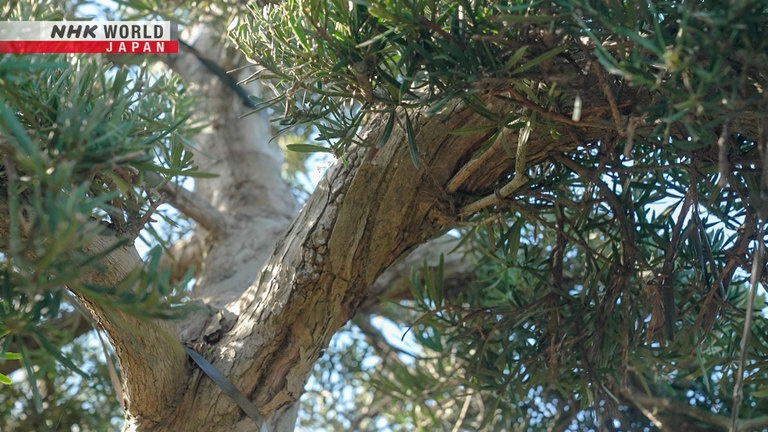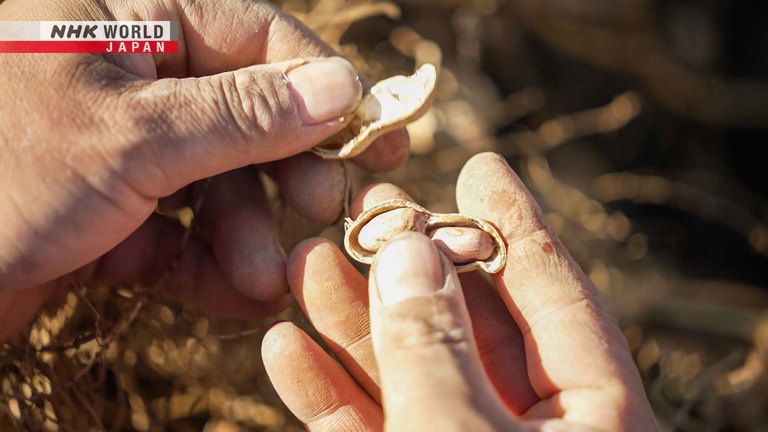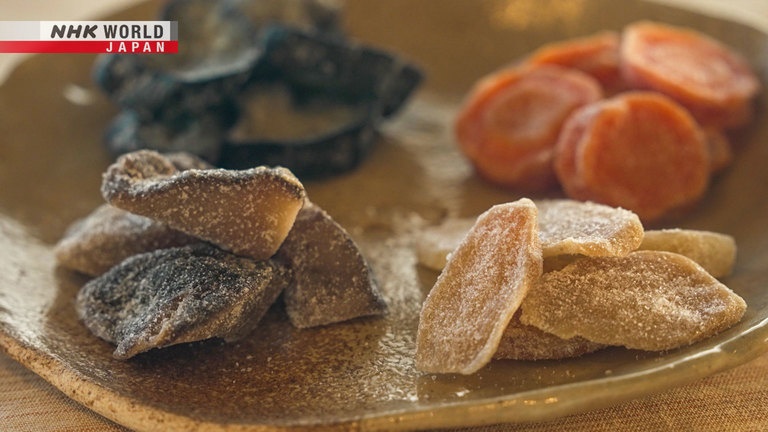CHIBA
Let's drive through Chiba Prefecture! We depart from Tokyo Station and enjoy magic hour at scenic Byobugaura. Along the way, encounter Chiba's traditions and be amazed by their artistic quality.




Transcript
If you wish to really see Japan, get behind the wheel.
Notable places and interesting people are waiting just off the beaten path.
We're heading to Tokyo's neighbor to the east, Chiba Prefecture.
From Tokyo Station, we set out for scenic Byobugaura.
These cliffs have been depicted in art and literature for centuries.
Their sheer walls extend for ten kilometers along the coast.
We'll enjoy a magic hour amid this stunning scenery.
So, start your engine.
Chiba is waiting.
Let's hit the road.
Welcome! I'm your navigation system!
Buckle up for another great drive with sights that most tourists usually miss.
We start from Tokyo Station.
The Marunouchi Main Building is a blend of Western and Asian design.
The Western-style exterior is accented with distinctive Japanese-style foliage.
The Kokyo Gaien National Garden is right across from Tokyo Station.
This was once the entrance to Edo Castle.
Here too, you'll see more magnificent trees.
More on them later!
I recommend taking the metro expressway across the bay to Chiba.
You'll see one unforgettable view after another.
Tokyo Tower is a broadcasting tower and a symbol of Tokyo.
The 800-meter Rainbow Bridge is suspended over the bay, with superb views along its entire length.
Our journey to Chiba continues across Tokyo Bay, into the 15-kilometer Tokyo Bay Aqua-Line.
The first section is a 10-kilometer tunnel that dives beneath the waters of Tokyo Bay.
Construction took nearly a decade.
It was an engineering moonshot made possible, with the most cutting-edge technology of the time.
See that sign? We're currently passing beneath the sea, 57 meters deep!
From here on out, we enter Chiba Prefecture.
Out of the tunnel and onto the water.
This section makes you feel like you're gliding right over the ocean.
Winds can be strong here, so exercise caution.
This part of Chiba's coast is lined with factories.
We're about to arrive in Kisarazu, the gateway to Chiba.
Let's make a little detour here.
I'll show you an interesting side of Chiba in winter.
We get off at the Kisarazu-Higashi Interchange.
Can you guess what these mounds are?
They're actually harvested crops, drying in the field.
Farming in Chiba used to be challenging.
The problem was a lack of water.
So farmers learned to do more with less.
They turned to cultivating peanuts.
Chiba is Japan's peanut kingdom, growing 80% of the peanuts in the nation.
There's a "michinoeki," or rest stop, near here with a huge selection of local specialties.
How about some gourmet peanuts to take home?
A giant peanut welcomes you.
The peanuts are here!
Quality and flavor are top notch.
The harvest is dried naturally for
about a month.
Deep flavor and aroma.
They're very delicious.
The peanuts are roasted
and graded before shipping.
The all-you-can-stuff event is popular.
Ready, go!
Time's up.
Thank you.
I got a huge pile of peanuts.
That was fun!
The shop features
thousands of local specialties.
Chiba is the birthplace of
Japanese dairy farming.
It also ranks first in soy sauce production.
The region has been a big soy sauce
producer since the 17th century.
Its warm, humid climate is
perfect for soy sauce brewing.
We're here to provide delicious food
from Chiba to people all over Japan.
Anytime you come, you'll find fresh,
wholesome, locally grown produce and goods.
These are locally grown "jinenjo."
"Jinenjo" are high-quality, premium yams.
Harvest season runs from fall into winter.
"Jinenjo" grow in the mountains.
But we cultivate them here.
We use PVC pipes
to grow them horizontally.
The skin is nutritious too.
The whole yam is grated.
It's very glutinous.
Tastes great on top of rice.
What did you think of those Chiba flavors?
Now take the expressway east.
Coming up, there's another spot you'll want to visit.
The town of Togane is closely associated with Shogun Tokugawa Ieyasu.
Let's get off at the Togane Interchange.
Tokugawa Ieyasu had a villa on Lake Hakkaku.
It was the perfect place for falconry, his favorite hobby.
Ieyasu promoted a certain industry here.
Ornamental tree production.
Togane is famous today for its beautifully-shaped pine trees.
Many of the homes have shaped trees in their front gardens.
Magnificent, shaped pines stand in front of Togane City Hall.
The age of this pine is estimated at 350 years.
It was transplanted here in 1996.
Skilled gardeners keep the tree carefully maintained.
Remember those trees in front of Tokyo Station?
They were also shaped in Chiba.
Trees like this take years of careful cultivation.
I know a "michinoeki" where you can get a closer look at this wonderful art.
You may even see some tree shapers at work.
Let's go!
The site has long been
used for tree cultivation.
The former auction grounds are now
a tree market.
Togane draws visitors from far and wide.
We have trees
you won't find anywhere else.
Togane is a center of tree shaping.
Visitors can see how it's done.
Each branch is chiseled to change its shape.
The branches are bent and fixed in place.
It takes decades to complete these works of art.
I love this work.
I've been doing it for 30 years.
This is a Japanese yew tree.
This is the front side.
Note the strong foliage and
how the branches were shaped.
This tree must be 20 or 30 years old.
Once it's big enough,
we use chisels to notch the branches.
The branches are bent gradually
to the desired shape.
We don't just bend the branches.
They must be twisted over time to not break.
Most of the branches
were shaped this way.
Over time, these notches
we chisel will slowly fill in.
A tree like this would be
the centerpiece of any garden.
Confections are another Togane tradition.
Togane "tenmondo" is a traditional confection.
People have been making it for centuries.
Ingredients include seasonal
vegetables and fruits.
Simmer for an hour with sugar.
There are no preservatives or additives.
I love ginger "tenmondo."
At first it's sweet,
but there's a spicy bite.
We want future generations
to enjoy this sweet.
Welcome back! Did you enjoy historic Togane?
From here we get back to the expressway.
It will take us up the coast.
Kujukuri Beach is 20 minutes from the "michinoeki."
From there we'll aim for Byobugaura, our final destination.
Kujukuri Beach, coming up!
Running for 66 kilometers along the Pacific coast, it's one of the longest beaches in all of Japan.
The Tokyo Olympics surfing competition was held here in 2021.
Lots of shops along the beach sell fresh-caught seafood.
Offshore lies one of Japan's biggest sources of sardines and clams.
You can grill the fish and shellfish you bought right there by the ocean.
We're just about to arrive...
to Byobugaura, at the eastern end of Kujukuri Beach.
The road runs along the top of the cliffs.
Looks like there's some time before sunset.
We took three hours and 30 minutes to cover 170 kilometers.
How about taking a walk and enjoying the setting sun, lighting up the cliffs of Byobugaura?
Wind and waves sculpt the cliffs.
Nothing grows on their ever-changing faces.
Stripes of sediment add a touch of color.